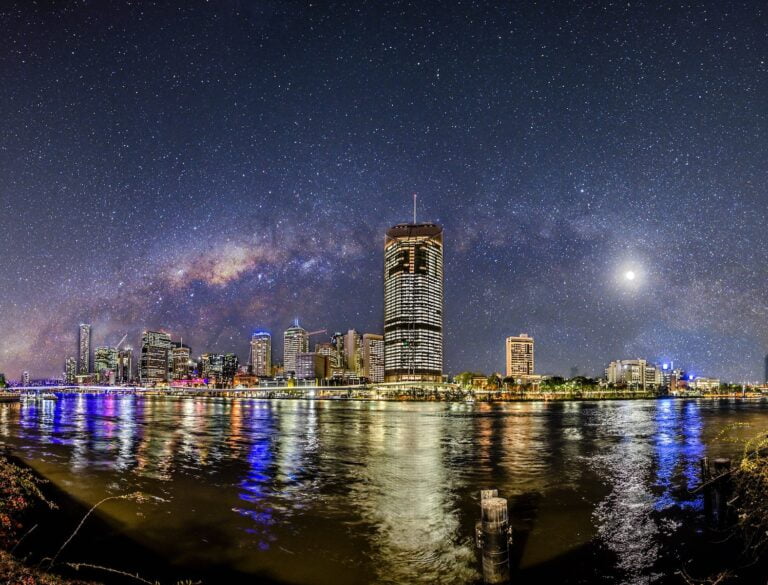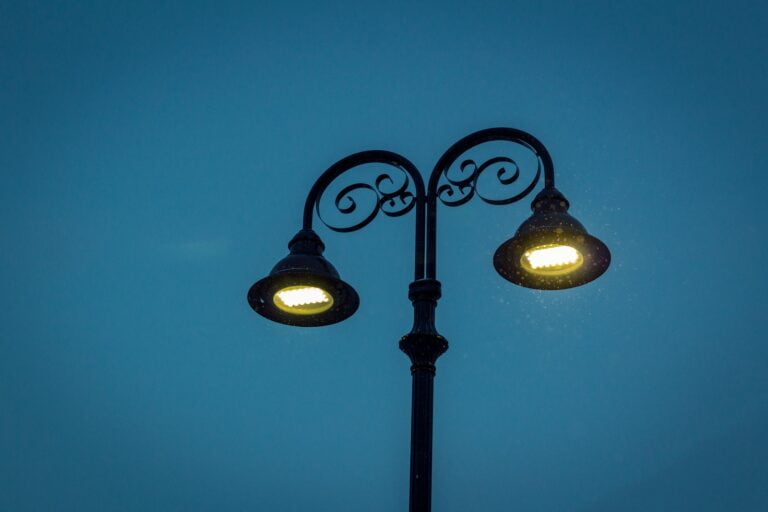Dark Sky Lighting: The Solution to Light Pollution?

In a world where the beauty of the night sky is gradually fading due to increasing light pollution, a promising solution has emerged: dark sky lighting. This revolutionary concept in outdoor lighting design offers a blend of functionality and conservation, enabling us to enjoy illuminated spaces while preserving the pristine beauty of the night sky.
In terms of the light source, dark sky lighting typically uses bulbs with lower color temperatures. This helps produce a warmer, less intrusive light, which is less likely to contribute to sky glow, a common form of light pollution.
What Is Dark Sky Lighting?
Dark sky lighting, as the name implies, is a type of outdoor lighting that aims to minimize light pollution, the excessive and misdirected artificial light produced by conventional lighting systems 🌟. It’s designed to ensure that light is only directed where it’s needed, reducing the amount of scattered light that obscures our view of the stars.
How Does Dark Sky Lighting Work?
The concept behind dark sky lighting is quite simple: instead of allowing light to spill out in all directions, these fixtures are designed to point downwards. This ensures that the light illuminates the ground while the sky above remains dark. Moreover, these fixtures often use shields or special designs to further control light dispersion, ensuring minimal light escapes upwards or sideways.
In terms of the light source, dark sky lighting typically uses bulbs with lower color temperatures. This helps produce a warmer, less intrusive light, which is less likely to contribute to sky glow, a common form of light pollution.
The Problem of Light Pollution

Light pollution refers to the excessive or misdirected outdoor lighting that’s prevalent in many urban areas today. From streetlights to billboards to residential exterior lighting, artificial light has become an inescapable part of our landscapes 🏙️. But it’s not just an aesthetic issue – light pollution also has significant impacts on our environment and health.
How Widespread is Light Pollution?
Light pollution is a global issue, affecting both developed and developing countries. According to the International Dark-Sky Association, over 80% of the world’s population lives under light-polluted skies. In the United States and Europe, this number rises to 99%. It’s clear that light pollution is a widespread problem that needs an effective solution.
Dark Sky Lighting Vs Light Pollution
Here’s where dark sky lighting comes into play. By focusing light where it’s needed and reducing unnecessary upward and sideways light, dark sky lighting can significantly reduce light pollution. It’s a simple yet effective strategy to preserve our view of the stars and minimize the negative impacts of excessive artificial light.
What Makes Dark Sky Lighting Different?
Dark sky lighting fixtures have several key features that set them apart from traditional outdoor lighting:
- Fully shielded design: These fixtures are designed to prevent light from shining upwards or sideways. Instead, the light is directed downwards, where it’s needed.
- Lower color temperatures: Dark sky lighting uses bulbs with lower color temperatures, which produce a warmer, less intrusive light.
- Energy efficiency: Many dark sky lighting fixtures are designed to be energy-efficient, further contributing to their environmental benefits.
By incorporating these features, dark sky lighting offers a unique solution to the pervasive problem of light pollution.
The Impact of Dark Sky Lighting on the Environment
Dark sky lighting can have profound effects on our environment. By reducing light pollution, it can help preserve natural nightscapes, benefiting both nocturnal wildlife and our own enjoyment of the night sky.
Can Dark Sky Lighting Help Protect Wildlife?

Yes, indeed. Many nocturnal species rely on the cover of darkness for survival. Artificial light can disrupt their behaviors, including feeding, mating, and migration. By reducing unnecessary light, dark sky lighting can help safeguard these creatures and maintain biodiversity.
Dark Sky Lighting and Human Health
It’s not just the environment that benefits from dark sky lighting. Excessive artificial light can interfere with our circadian rhythms, affecting our sleep patterns and overall health. According to the American Medical Association, exposure to excessive light at night can lead to a range of health problems, including sleep disorders, obesity, and even certain types of cancer.
How Does Dark Sky Lighting Improve Our Health?
Dark sky lighting, by reducing unnecessary light pollution, can help mitigate these health risks. It contributes to a healthier sleep environment by minimizing our exposure to artificial light during the night. This can potentially improve sleep quality and overall health, making dark sky lighting a win-win solution for both the environment and human health 🌃.
The Future of Dark Sky Lighting
While dark sky lighting is making headway in reducing light pollution and its effects, there’s still a long road ahead. With increasing awareness and technological advancements, the future of dark sky lighting looks promising. It’s more than just a lighting solution; it’s a movement towards a more sustainable and healthier world.
The Growing Dark Sky Movement
The dark sky movement, which advocates for the reduction of light pollution, is gaining momentum globally. This movement recognizes the multiple benefits of reducing light pollution, including improved well-being, health, and safety of both people and wildlife, along with energy saving. Dark sky lighting plays a pivotal role in this movement, providing a practical solution that doesn’t compromise on visibility or safety.
The Takeaway
Dark sky lighting offers a compelling solution to the growing problem of light pollution. It strikes a balance between our need for artificial light and the preservation of the natural night sky. Not only does it help protect our environment and wildlife, but it also has potential benefits for our health and safety. So, next time you’re thinking about outdoor lighting, why not consider dark sky lighting? It could make a world of difference.
Glossary Terms
- Dark Sky Lighting: A type of outdoor lighting designed to minimize light pollution by focusing light downwards and using bulbs with lower color temperatures.
- Light Pollution: The excessive or misdirected outdoor artificial light that obscures the natural darkness of the night sky.
- Sky Glow: A brightening of the night sky over inhabited areas, caused by the reflection and scattering of artificial light.
- Circadian Rhythm: A natural, internal process that regulates the sleep-wake cycle and repeats roughly every 24 hours.




